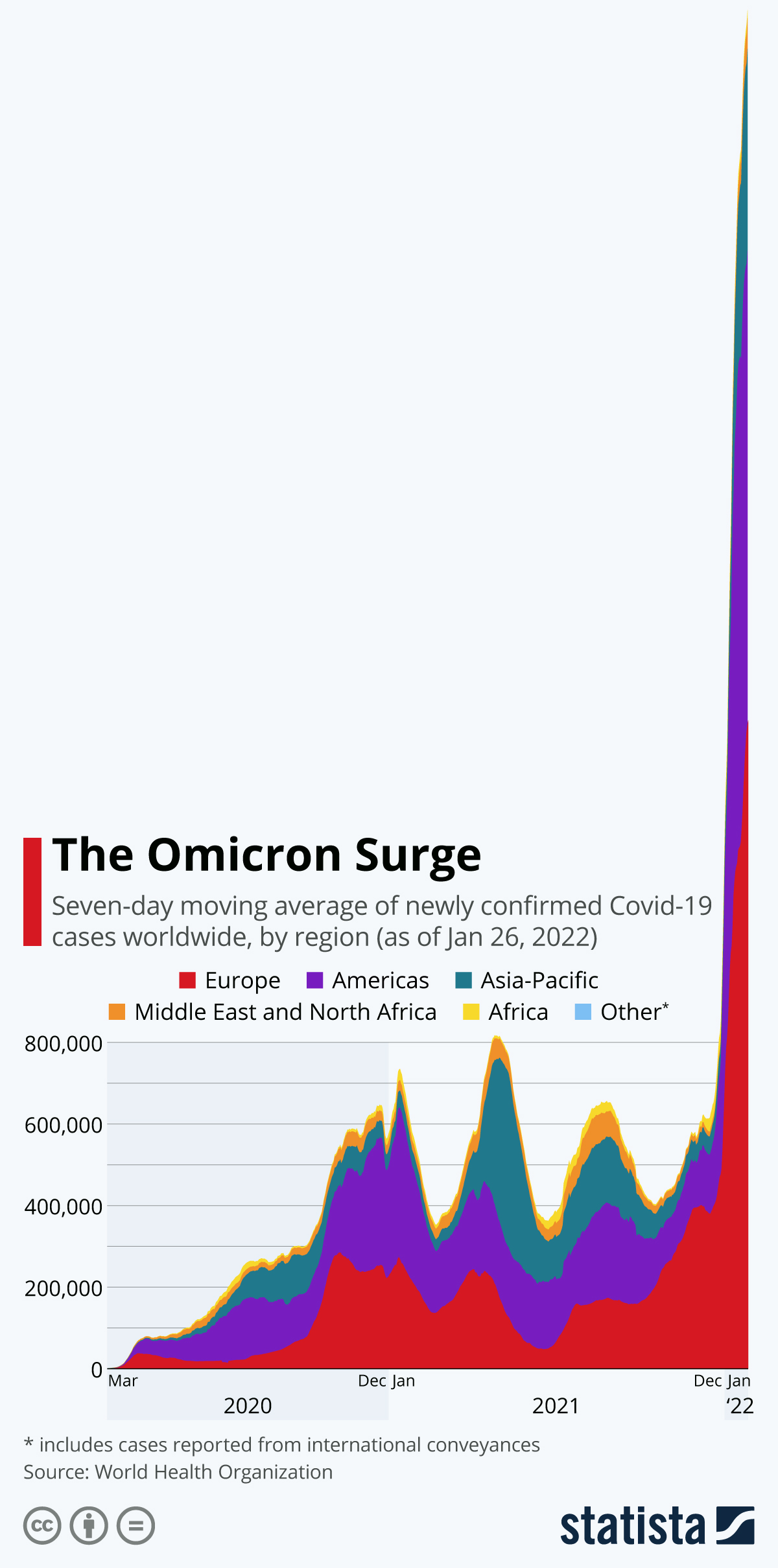As the Omicron variant continues to push new Covid-19 cases to previously unthinkable levels in large parts of the world, WHO leaders have once again warned that letting the virus circulate at this scale could result in the emergence of new, potentially more dangerous variants.
“The more the virus circulates, the more opportunities the virus has to change,” Dr. Maria Van Kerkhove, the WHO’s Covid-19 technical lead, said in a statement last week. “Omicron will not be the last variant that you will hear us discuss, and the possibility of future emergence of variants of concern is very real.” The next variant would have to be more transmissible in order to overtake current variants, Van Kerkhove noted, the big question being whether it would be more severe.
According to the World Health Organization, the seven-day average of daily new cases climbed to 3.33 million on January 26, which is quite literally off the charts compared to previous waves. And while some have called Omicron a blessing in disguise, a “natural vaccine” that will bring us closer to the end of the pandemic, most health officials don’t seem to share that sense of optimism. “It’s dangerous to assume that Omicron will be the last variant or that we are in the endgame,” Dr. Tedros Adhanom Ghebreyesus, head of the WHO, said an executive board meeting of the organization on Monday. “Globally, the conditions are ideal for more variants to emerge.”
also read
Artist creates amazing tattoo based on Greek mythology (video)
The WHO’s Director of Europe, Dr. Hans Kluge struck a slightly more hopeful note in a statement on Monday. While Kluge also stressed that the pandemic is far from over, he added that “Omicron offers plausible hope for stabilization and normalization.” Like others before him, he pointed towards more equitable access to vaccines as the best way out of the pandemic. “If 2021 was the year of vaccine production, 2022 must be the year of vaccine equity in the European Region and beyond. Too many people who need the vaccine remain unvaccinated. This is helping to drive transmission, prolonging the pandemic and increasing the likelihood of new variants,” Kluge said.
You will find more infographics at Statista
Ask me anything
Explore related questions






